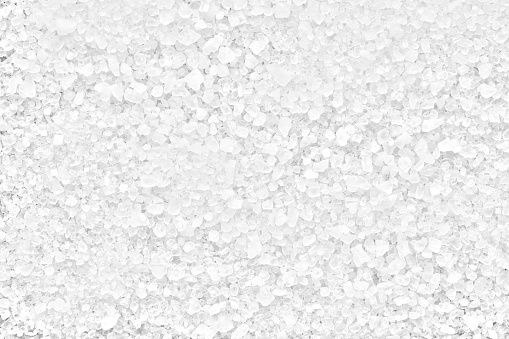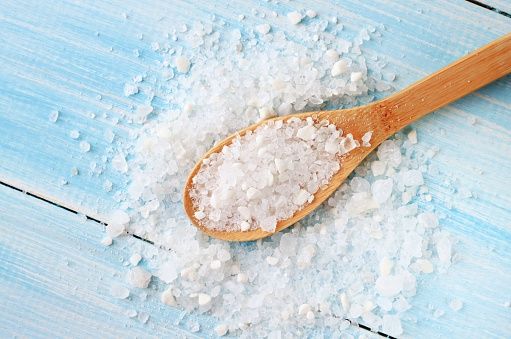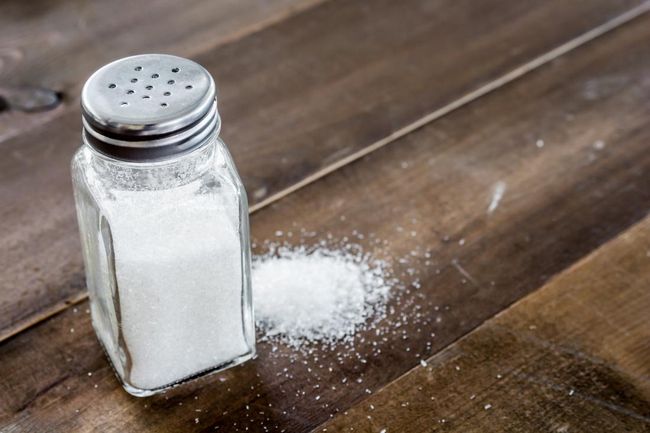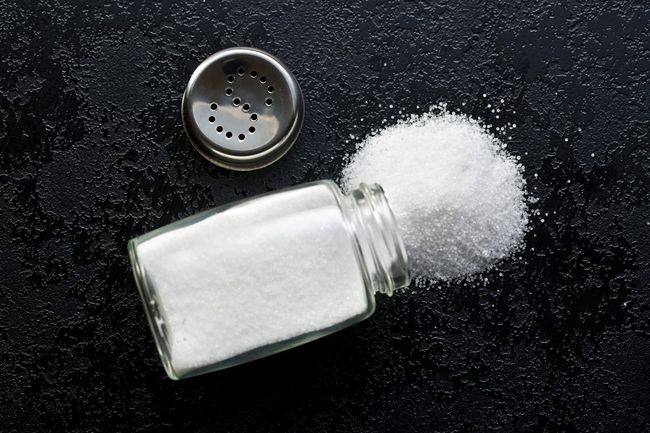Why does salt draw out water?
Salt draws out water from the food. It does not evaporate any water from the food. So, if you put salt into hot food, it will cool down because the water will move towards the cooler side. This is why we see people putting salt into cold drinks.
In this brief guide, we are going to answer the question “why does salt draw out water” with an in-depth analysis of the reason why salt draws out water from different foods. Moreover, we are going to discuss the difference between curing, bringing, and marinating.
So, without much ado, let’s dive in and figure out more about it.
Why does salt draw out water?
So, the real reason behind the property of salt to draw out water from different foods is “osmosis”.
Meat
In the case of meat, when we do the curing process to preserve the meat for quite a long, what we do is, apply salt in a generous amount to the meat and leave it. After some time, the salt draws out the water from the meat, thereby making it dry.

So, what happens during this process is that after applying salt to the meat, the outside of the meat becomes hypertonic and has a higher concentration of salt present on the outside as compared to inside the cells of the meat. Therefore, the water tends to move from the point of lower solute concentration (cells of meat) to the point of higher solute concentration (outside the meat). Thus, salt draws out water from different food items.
Vegetables
In the case of vegetables, if you add salt to them the same osmosis process sets in as the cells of the vegetables have lower salt concentration as compared to the outside. Therefore, the water drives out of the vegetables thereby making the vegetables all soggy and they won’t have their characteristic crunch in them anymore.
What is osmosis?

Osmosis is the process in which the solvent moves from a point of lower solute concentration to a point of higher solute concentration. The process of osmosis maintains the solute-solvent balance throughout the semi-permeable membranes and this process also plays an important role in the body of living organisms.
What is plasmolysis?
Plasmolysis is a process that takes place because of osmosis. In plasmolysis, the cell loses its water content when it is placed in a hypertonic solution (the solution having a high solute concentration). As the cell loses its water content, it shrinks.
What is curing?

Curing is the process that is used to preserve meat like chicken, turkey, beef, etc. This process is carried out by using salt which helps in driving the water out of the meat, thereby decreasing the moisture content of the meat.
What are the different types of curing?
There are two main types of curing
Salting
Nitrate / Nitrite curing
Does curing change the taste of the meat?
Yes, the process of curing not only dries the meat out but also changes the overall taste profile of the meat. The cured meat has a more intense flavor than regular meat.
Does curing change the texture of the meat?
Yes, curing does change the texture of the meat and makes it drier and firmer as the cured meat has lost its moisture content to a great extent.
Does drying out meat protect it against bacteria?
As we all know that bacteria and microbes need moisture and a particular temperature to grow on the meat. So, the meat that is devoid of its moisture won’t provide a suitable environment for the microbes to grow onto. Therefore, the bacterial growth will be halted and the meat that has been cured lasts for a very long time.
What is the difference between curing, bringing, and marinating?

Curing
Curing is essentially the process that is used to preserve meat for a very long time. In curing, we coat the meat with a large amount of salt and afterward keep it aside for approximately 24 hours or more so that the water comes out of the meat, thereby drying it.
In curing the process of plasmolysis sets in. Plasmolysis is the process in which the cells lose their water content in a hypertonic solution. So, when you add a lot of salt to your meat, what happens is that the cells of meat lose their water content and thereby the meat dries out.
Brining
Bringing is the process that is used to make the meat juicier and to add some extra flavor to it. In bringing we immerse the meat in the water with a little salt, and some herbs added to it.
In the case of brining, again the process of osmosis sets in, but as the outer environment is hypotonic in case of brining (salt is added in a lot of water) so instead of losing water, the cells of meat soak in the water and therefore the meat becomes juicier and tender after brining.
Marinating
Marination is the process that is done to impart different flavors to the meat. Marination is done by using some acids (lemon), salt, and different spices. The acid degrades the structure of the protein and imparts the flavor of different herbs and condiments that are added to the marination mixture.